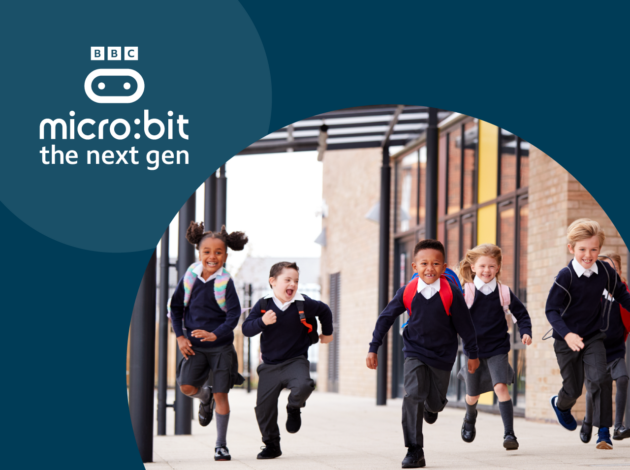Following a collaboration with the BBC and Micro:bit Foundation ONS Director, Mary Gregory, shares how the results of a playground survey are only the start of the journey for the next generation of budding data scientists.
Back in February, I had the privilege of sharing an exciting partnership between the Office for National Statistics (ONS), the BBC, and the Micro:bit Foundation centred around a project that has captured the imagination of young minds across the UK.
The Playground Survey, part of the broader BBC Micro:bit – the next gen campaign, was designed to inspire the next generation by encouraging primary school children to become playground investigators and dive into the world of data collection and analysis.
Armed with their BBC micro:bits — pocket-sized computers provided as part of the campaign — children were tasked with gathering data on their playground environments. From measuring playground size to recording biodiversity and even analysing how they spend their playtimes, this initiative offered a hands-on introduction to the fascinating world of data.
Projects like this spark curiosity and show children the real-world applications of data, laying a foundation that will serve them well as they grow into adulthood. Data literacy is no longer just a skill for specialists; it’s an essential part of understanding and navigating the modern world. And what better way to introduce these concepts than through something as familiar and fun as playtime?
Thousands of children, aged 7-11, have been busy exploring, collecting, and analysing data, with more than 150 schools from across the UK submitting results for the Playground Survey. What did this tell us? Fascinating insights into how children use their playgrounds.
The Importance of Weather and Playtime
Among the most notable findings, the survey showed a correlation between the weather and the levels of activity on the playground. On dry days, the average (median) time a student was recorded as inactive was just over half (52%), a number that increased to 60% on wet weather days.
However, before we make any conclusions about what this might mean, it’s important to acknowledge the limitations of this data. While they give us a unique snapshot of certain classes within the schools that have taken part, our findings do not represent pupils from every class and every school in the country – the sample will have biases and we have not made any attempt to adjust for potential biases.
It’s also important to look at the results alongside other available data, to put what we have into context. For instance, the well-established Active Lives survey – conducted by Sport England – tells us more about children’s levels of physical activity and suggests that the proportion of school children classified as being active has actually been on the rise when we look at the long-term picture.
This kind of context is exactly what we’re trying to get children to think about as part of the project. If they can learn about the strengths and limitations of data, then they will be able to better understand other data they come across in their lives.
For the children and schools that have taken part in the Playground Survey, the data collected remains incredibly valuable, not only in terms of fostering data literacy but also in its potential to improve everyday experiences.
The insights we have offer a deeper understanding of how environmental factors like weather impact children’s behaviour during breaks, which may prompt schools to think about what more they can do to encourage active play on wet weather days.
My colleague, Tim Green, the lead analyst for the survey, has explored the findings of the Playground Survey in greater detail as part of his blog for the ONS Data Science Campus. It’s a fascinating read.
From Data Collection to Practical Application
While collecting data is an essential step in understanding, the real challenge — and perhaps the most exciting part — is figuring out how to use that data to make informed decisions. This is where teachers and pupils alike are now being encouraged to reflect on their findings. What does the data tell them about how their playground is being used? What changes can be made to ensure the playground is a more inclusive, active, and enjoyable space for everyone?
This is a brilliant exercise in critical thinking, one that mirrors the decision-making processes used by professional data scientists and analysts in a wide range of fields.
Schools can implement plans for the greater good based on results they are seeing for their school, teaching students the real-world value of using information to drive positive change. It’s an invaluable lesson in turning data into action.
Looking Ahead: A Bright Future for Data Science
The Playground Survey has been a fantastic opportunity to engage with young people about the importance of data in their everyday lives. And while it’s been brilliant to see so many people engaged, the journey for this next generation of budding data scientists is only just beginning. We’ve seen incredible enthusiasm from schools, but there’s still room for more to get involved in this data challenge.
If you’re a teacher and haven’t yet participated, I wholeheartedly encourage you to see for yourself what all this fuss is about. All teaching aids remain on the BBC website. The tools are there, the guidance is available, and the benefits — for both the children and the broader school community — are substantial. In helping children become data-literate now, we are preparing them for a future where data will play an even more critical role in decision-making and problem-solving.
I look forward to seeing how children continue to explore, analyse, and apply their findings. It’s an exciting journey and I can’t wait to see where it takes them.
